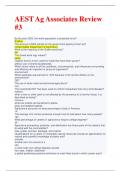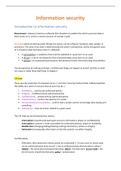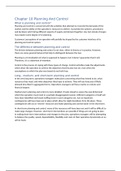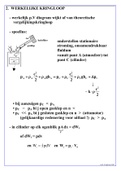Book: Hair, Black, Babin and Anderson (2018), Multivariate Data Analysis (8 th edition), Cengage
Learning. Print ISBN: 9781473756540, also available as ebook.
Index
Lecture 1. Modelling in Quantitative Research in Organisational Design: Related constructs........ 2
→ Book chapter 1 + 9 (= 1 + 11 ed. 7)(excl. example) ............................................................... 2
Lecture 2 + 3. Explorative Factor Analysis ..................................................................................... 8
→ Book chapter 3 (= 3 ed. 7) + video lecture ............................................................................. 8
Lecture 4. Ad-on: Confirmatory factor analysis ............................................................................. 22
→ Book chapter 10 (= 12 ed. 7) (excl. example) ...................................................................... 22
Lecture 5 + 6. Multiple Regression with dummies and interactions .............................................. 26
→ Book chapter 5 (= 4 ed. 7) + video lecture ........................................................................... 26
Lecture 7. Ad-on: Logistic Regression .......................................................................................... 38
→ Book chapter 8 ( = 6 ed. 7)................................................................................................... 38
,Lecture 1. Modelling in Quantitative Research in Organisational Design: Related constructs
→ Book chapter 1 + 9 (= 1 + 11 ed. 7)(excl. example)
Companies collect data. Most of the time unstructured big data. You have to use both qualitative and
quantitative methods to analyse this data.
Your job will be: to analyse data in order to extract information for substantiated, actionable strategies,
recommendations…
Theory
= a proposed description, explanation or model of the manner of interaction of a set of phenomena,
capable of predicting future occurrences or observations of the same kind, and capable of being
tested through experiment or otherwise falsified through empirical observation.
Theories…
… in organization and HRM research are (usually) not that theoretical (as opposed to practical)!
… are better, the more they prohibit (following Popper).
… are not tautological (they explain something).
… ought to be empirically testable or falsifiable.
… consists of constructs (concepts, phenomena, variables) and hypotheses (on their interactions or
relationships).
Popper: the criterion of the scientific status of a theory is its falsifiability, or refutability, or testability.
Hypothesis
Usually consists of two parts:
- A condition
- A consequence
Each part contains a construct:
- The independent variable (condition)
- The dependent variable (consequence)
Examples:
- The higher A, the higher B
- A lead to B
Construct
= a conceptual term used to describe a phenomenon of theoretical interest.
… is quantifiable and directly or indirectly observable.
An indirectly observable construct is called ‘latent’. Example: IQ
Constructs must be defined in terms of:
The object: what matters
Attribute:
Rather entity: who are we talking about
Different relationships
- Direct causal relationships
Usually, but not necessarily, a linear effect is meant. A is
called an exogenous (independent) variable; B is called an
endogenous (dependent) variable.
2
,- Mediated causal relationship
A appears statistically to have a direct effect on B. However, A
influences Z, and Z influences B. Z is called the mediator (variable).
Mediation is called partial if the effect between A and B remains
significant after inclusion of the mediator.
Which variables are exogenous (A), which are endogenous (Z +
B)?
- Spurious relationship
A third variable (here: Z) influences A as well as B.
Example: there is a relationship between drowning in pools and ice
cream consumption.
- Bidirectional causal relationship
A lead to B, and B also leads to A.
But: not necessarily at the same time.
- Unanalysed relationship
There is a correlation between A and B
- Moderated causal / interaction relationship
The strength and/or direction of the effect of A on B depends
on the level of M.
Here, M is a moderator (variable)
Example: Theory of reasoned action
The Two-Language concept
On the one hand we have the theoretical language and variable, for example norms. We have to
formulate a question; therefore, we have the observable language and variables. There is a slight
distinction between the two. Operationalize theoretical with observable.
3
,Linking theory and observation
Measurement model and structural model
Example (theory of reasoned action):
PPT!
= independent
Multi-item measurement – Why?
Increases reliability and validity of measures.
Allows measurement assessment: measurement error, reliability, validity.
Two forms of measurement models: formative (emergent), reflective (latent)
Reflective measurement models: direction of causality is from construct to
measure. Indicators expected to be correlated. Dropping an indicator from
the measurement model does not alter the meaning of the construct. Takes
measurement error into account at the item level. Similar to factor analysis.
Typical for consumer research constructs.
➔ Reflective indicators: construct occurrence, interchangeable, highly correlated,
explicit consideration of measurement errors, several quality criteria, connected
to construct by factor loadings, identical antecedents and
consequences. Primarily applied for testing complex
causal relationships.
4
, Formative measurement models: direction of causality is from
measure to construct. No reason to expect indicators to be correlated.
Dropping an indicator from the measurement model may alter the
meaning of the construct (statistical tests of reliability and validity do not
make any sense). Based on multiple regression (beware of
multicollinearity). Typical for success factor research.
Formative indicators: determine the construct values, eliminating
indicators means changing the construct meaning, not necessarily
correlated, not measurement errors, validity almost not testable,
connected to construct by regression coefficients, possibly differing
antecedents and consequences.
Primarily applied for estimating consequences of
single steps.
Example: drunkenness
Formative cannot be good when you only ask for wine, but a person did drink beer and is drunk. Your
conclusion will not be right.
(B1) Multivariate analysis refers to all statistical techniques that simultaneously analyse multiple
measurements on individuals or objects under investigation. Thus, any simultaneous analysis of more
than two variables can be loosely considered multivariate analysis.
(B1) Some basic concepts of multivariate analysis:
- The variate: the building block of multivariate analysis is the variate, a linear combination of
variables with empirically determined weights. A variate of N weighted variables (X1 to Xn) can be
stated mathematically as: Variate value = W1X1 + W2X2 + W3X3 + . . . + WnXn. Where Xn is the
observed variable and Wn is the weight determined by the multivariate technique.
- Measurement scale
o Nonmetric measurement scales: nonmetric data describes differences in type or kind by
indicating the presence or absence of a characteristic or property. These properties are
discrete in that by having a particular feature, all other features are excluded; for example, if a
person is a male, he cannot be female. An ‘amount’ of gender is not possible, just the state of
being male or female.
▪ Nominal scale: a nominal scale assigns numbers as ways to label or identity subjects or
objects. The numbers assigned to the objects have no quantitative meaning beyond
indicating the presence or absence of the attribute or characteristic under investigation.
▪ Ordinal scale: ordinal scales are the next higher level of measurement precision. In the
case of ordinal scales, variables can be ordered or ranked in relation to the amount of the
attribute possessed. Every subject or object can be compared with another in terms of a
‘greater than’ or ‘less than’ relationship. The numbers utilized in ordinal scales, however,
are really nonquantitative because they indicate only relative positions in an ordered series.
o Metric measurement scales: in contrast to nonmetric data, metric data are used when
subjects differ in amount or degree on a particular attribute. Metrically measured variables
reflect relative quantity or degree and are appropriate for attributes involving amount or
magnitude, such as the level of satisfaction or commitment to a job.
5








